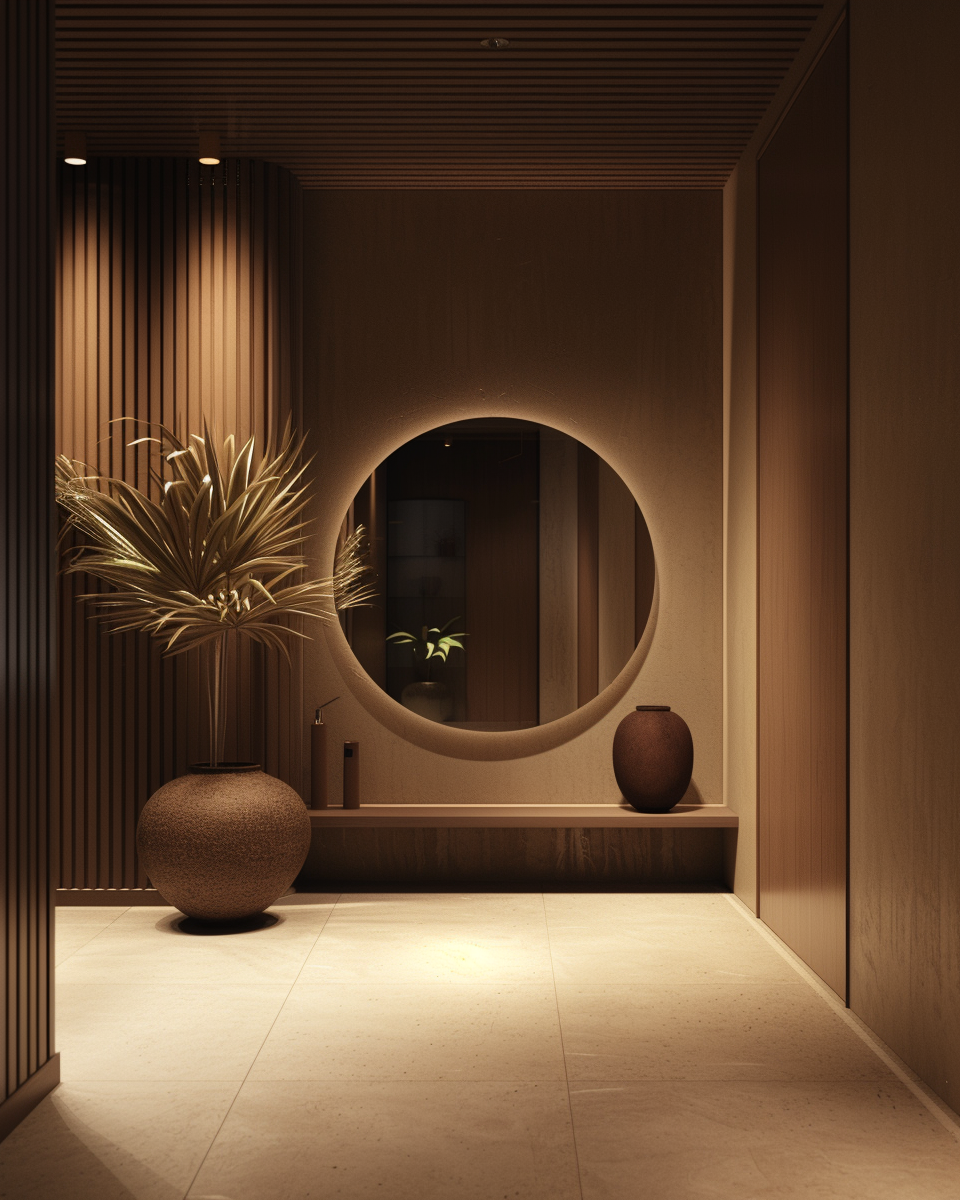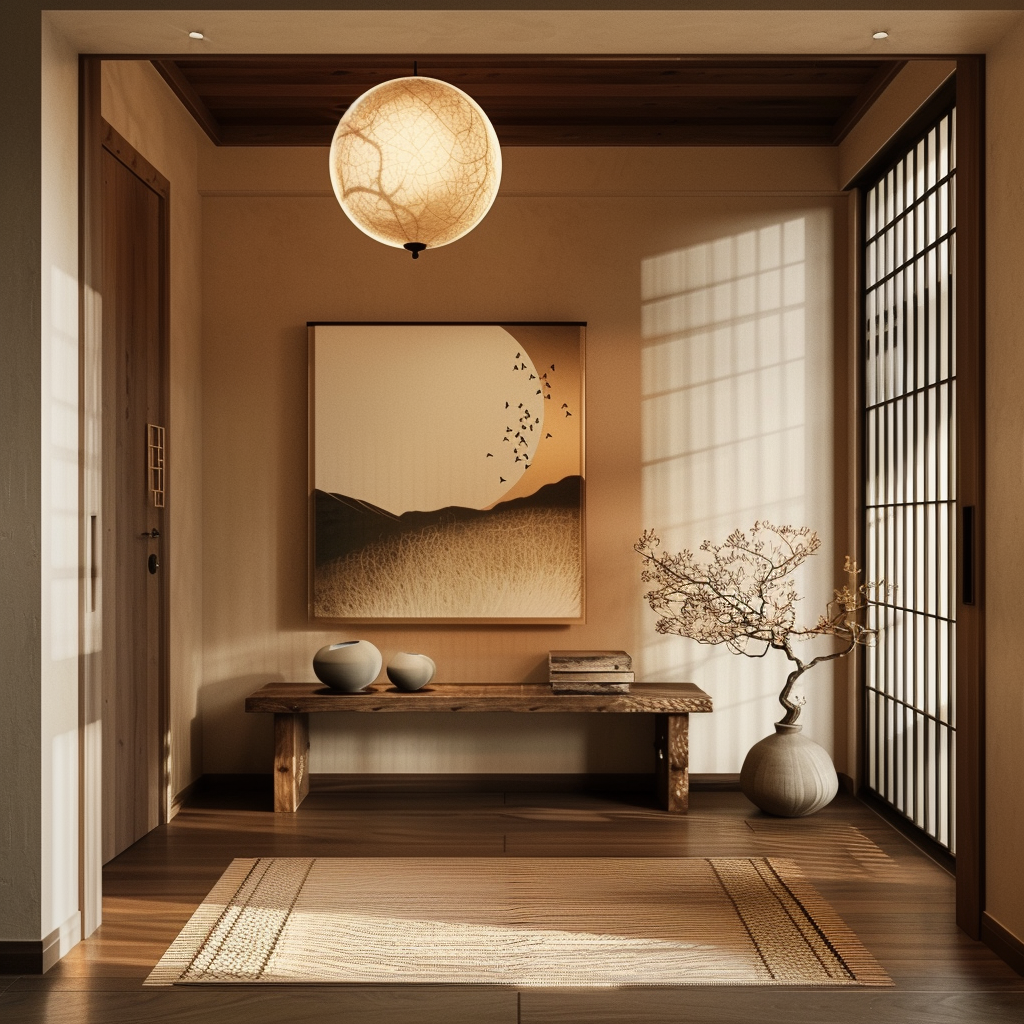In the spirit of sharing and inspired by the serene beauty of Japanese design, I dove deep into the world of Japanese hallways, or ‘genkan,’ as they’re traditionally known. It’s a space that combines elegance with simplicity, creating a welcoming atmosphere that whispers, “Welcome home,” the moment you step in. And guess what? I couldn’t resist but gather all these gems of inspiration and put together something special just for you. When it comes to Japanese architecture, every detail is carefully considered and thoughtfully designed. From the entrance to the interior, each element serves a purpose and contributes to the overall aesthetic. Let’s explore 30 unique elements that make up a Japanese hallway.
1. Genkan
The genkan is the traditional entryway where shoes are removed before entering the house. It helps maintain cleanliness and symbolizes the transition from the outside world to the inner sanctuary.

2. Tsuboniwa
A small, enclosed garden often found near the entrance of a Japanese home. It brings a touch of nature and tranquility to the hallway.

3. Shoji
Sliding doors made of translucent paper and wooden frames. They allow natural light to filter through while maintaining privacy.

4. Fusuma
Sliding doors with opaque panels that can be used to divide spaces or create privacy. They are often adorned with beautiful artwork.

5. Tokonoma
An alcove in the hallway where art, calligraphy, or flower arrangements are displayed. It serves as a focal point and reflects the homeowner’s taste.

6. Ranma
A decorative wooden transom above sliding doors. It adds elegance and visual interest to the hallway.

7. Chōzuya
A water basin used for purifying hands and mouth before entering a sacred space. It promotes cleanliness and spiritual purification.

8/35
Shop Reed Diffusers
8. Engawa
A narrow strip of flooring between the interior and exterior walls. It serves as a transition space and can be used for sitting or enjoying the view.

9. Noren
Curtains hung at the entrance of shops or restaurants. They provide privacy while still allowing customers to see inside.

10. Kakejiku
Hanging scrolls with calligraphy or paintings. They add a touch of elegance and cultural significance to the hallway.

11. Tatami
Traditional straw mats used as flooring. They create a warm and comfortable atmosphere.